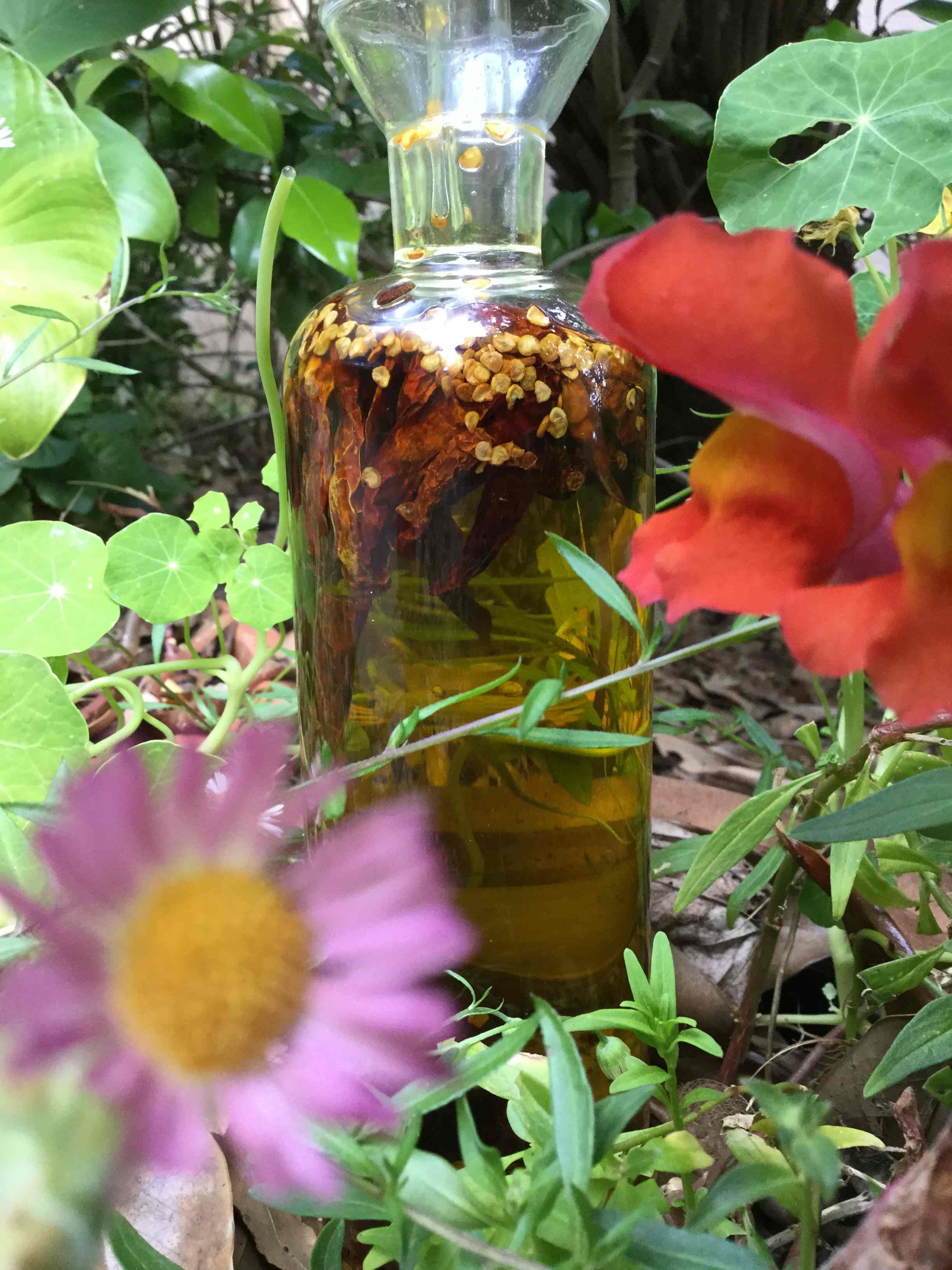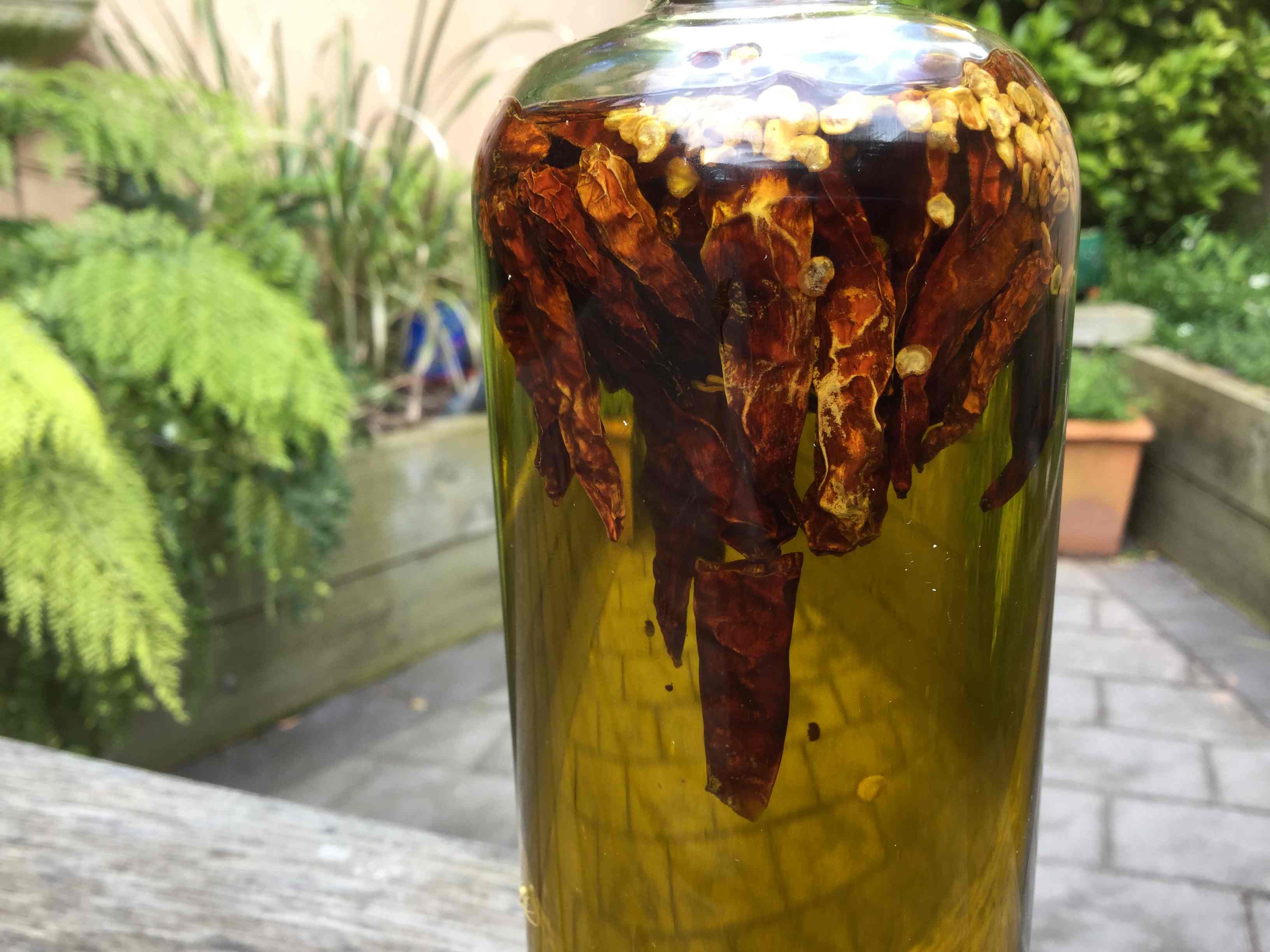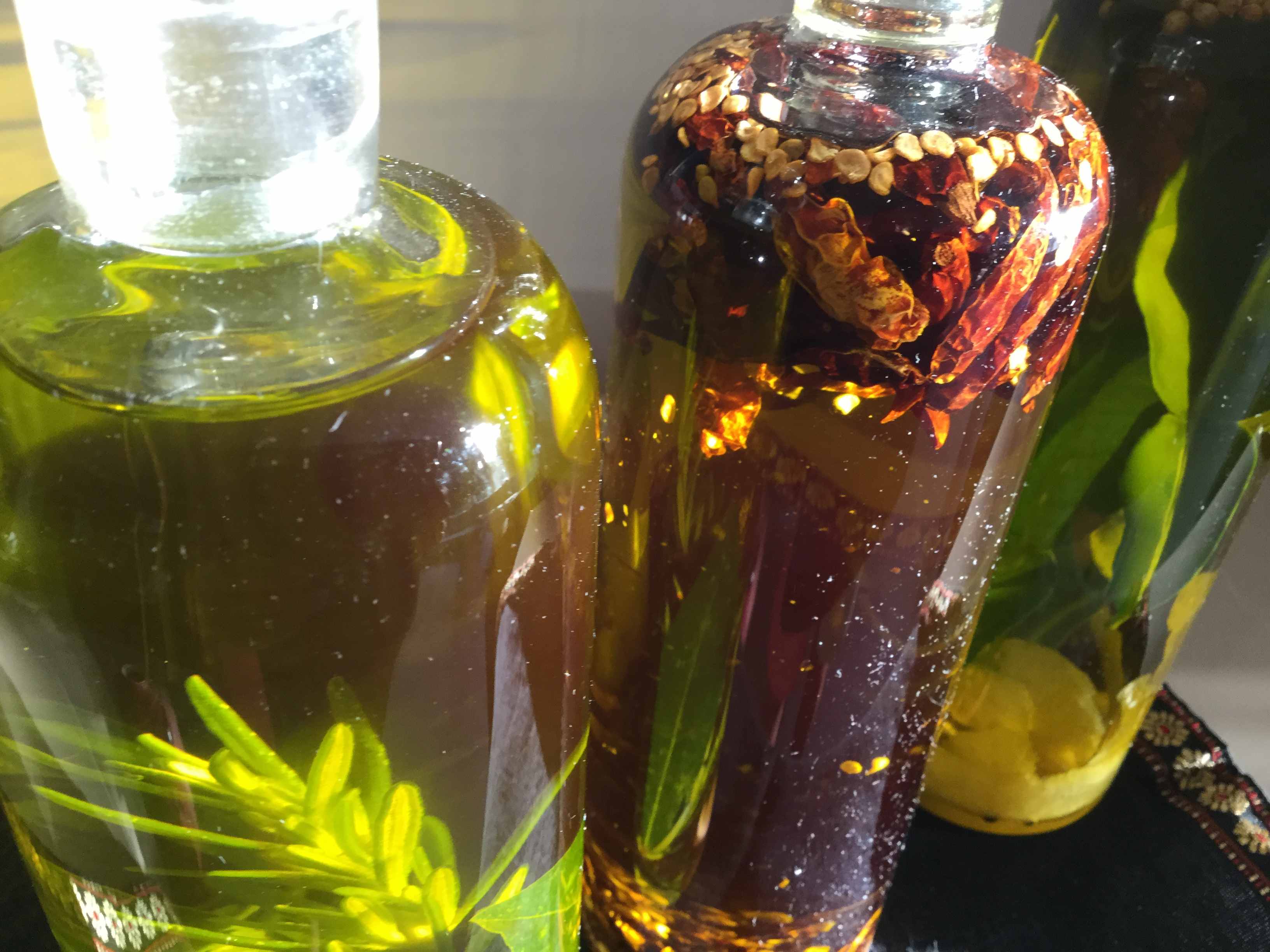In reading the contents of this post, also check: Food Safety Is Paramount
Flavoured oils are simple to make, however, you need to be cognisant of potential problems from contamination. Hence, check the link given above.
Shake them or stir them from time to time. Use good quality extra virgin olive oil. Store out of the light. Use them to splash or drizzle over pizzas, pasta, salads, eggs or whatever takes your fancy. Experiment with flavours. Maybe make an Asian variety using peanut oil.
Red chilli oil
It seems olio di peperoncino is widely used in Italy, yet, in many visits there, we had never noticed it. On our 2016 trip to Europe we came across it three times in France. The first was at a pizzeria in Sancerre, where we noticed many of the guests drizzling their pizzas from a bottle of oil containing red chillies. Next was at Fleurines, a small village near Chantilly (north of Paris), where we were at the local Italian restaurant recommended by our B&B hosts. And then in Paris where another Italian-style restaurant had a bottle of oil with red chillies and herbs on each table, along with standard oil and vingegar. In all cases the oil packed a punch, giving a definite zing to the food: we learnt the hard way not to add too much!
Later, when we started the Italy section of our trip, we noticed olio di pepperoncino did make frequent appearances on their restaurants tables.
It seems there are two main methods for making this chilli infused oil.
One option is not to heat the olive oil. It involves combining room-temperature oil with the chillies and then allowing time – days, weeks or months for the flavours to develop.
The other is to heat the oil and chillies. This will infuse the oil with the chilli flavour a lot faster, meaning you can use it sooner. However, heating changes the integrity of the oil, especially if heated too much. However, it reduces the chance of contamination, even with dried chillies.
We went with the former, risking the higher chance of contamination. We did so using this weblink as a guide: http://www.italyum.com/specials/91-hot-chilli-oil.html
Thus, we put some crushed red chilli in first, then whole dried chillies, then topped up the bottle with olive oil. We may have to wait for a month or so to experience the full effects of the infusion but hints were noticeable after a few days. Every now and again we will shake the bottle or stir with a chopstick.
Other flavoured oils
Our B&B host at Fleurines explained how she made two other flavoured olive oils.
One involved adding rosemary, bay leaves, black pepper and some dried chillies to the oil which was then heated for 30 minutes on a low temperature before bottling.
The other was a lemon oil made with grated lemon skin, again heating the oil.
On our return to Melbourne, in addition to red chilli, we made and photographed two other versions: one with rosemary sprigs and bay leaves, the other with lemon zest, kaffir lime leaves, coriander seeds and black peppercorns.
If you make your own, it is important to ensure that the jars are sterilised and that all herbs and raw ingredients have been thoroughly washed and patted totally dry. As a minimum, garlic cloves should be peeled and thoroughly washed. Coriander seeds and peppercorns can be slightly crushed. Shake or stir the bottle every few days to help the flavours develop. Try after a week or so to see how the flavours change. If your pourer has a narrow spout, the seeds may get stuck. Refrigerate or store in a dark place.
Stoppers
You may be able to find bottles or jars with suitable pourers. However, one option in Australia is to use Cobram olive oil. Their bottles, made from darkened glass and which come in large and small sizes, have a pop up stopper. Once a bottle is finished you can use a pair of pliers to remove the stopper. Add your flavourings and replenish with oil. Simply push the stopper back into place! Alternatively, remove the stopper and some of the oil, add your flavourings and then pop the stopper back in, screw on the lid and give the bottle a good shake.
Equipment: Sterlised bottle or jar, preferable with a pouring spout.
Difficulty: 1/5, Easy. 10 minutes preparation.
Serve: Drizzle over pizzas, pasta, salads, eggs, etc.
Contributions welcomed!
If you have any preserve-like recipes you regularly make, we are happy to hear about them, and why they are worth doing.






